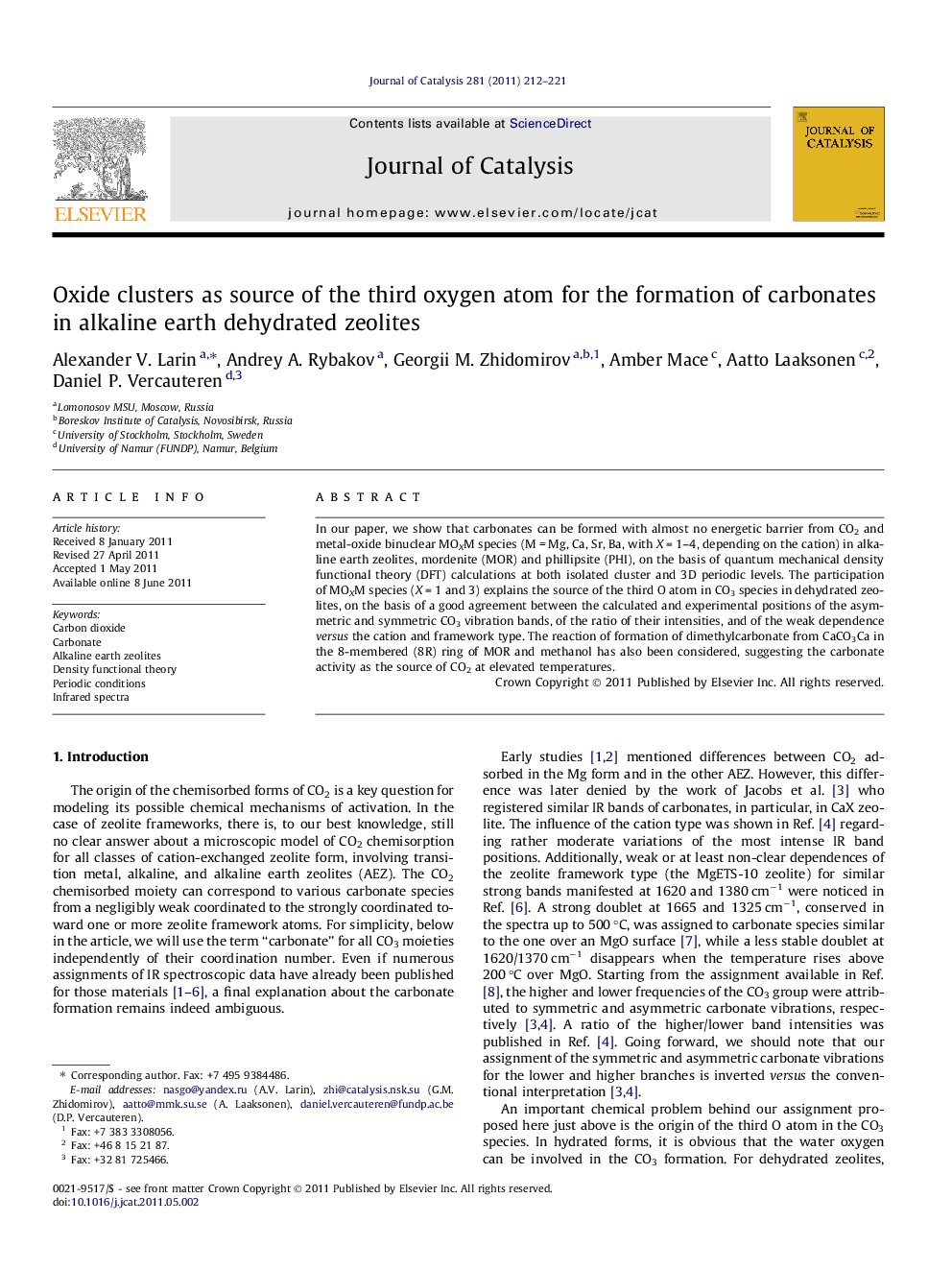| Article ID | Journal | Published Year | Pages | File Type |
|---|---|---|---|---|
| 61671 | Journal of Catalysis | 2011 | 10 Pages |
In our paper, we show that carbonates can be formed with almost no energetic barrier from CO2 and metal-oxide binuclear MOXM species (M = Mg, Ca, Sr, Ba, with X = 1–4, depending on the cation) in alkaline earth zeolites, mordenite (MOR) and phillipsite (PHI), on the basis of quantum mechanical density functional theory (DFT) calculations at both isolated cluster and 3D periodic levels. The participation of MOXM species (X = 1 and 3) explains the source of the third O atom in CO3 species in dehydrated zeolites, on the basis of a good agreement between the calculated and experimental positions of the asymmetric and symmetric CO3 vibration bands, of the ratio of their intensities, and of the weak dependence versus the cation and framework type. The reaction of formation of dimethylcarbonate from CaCO3Ca in the 8-membered (8R) ring of MOR and methanol has also been considered, suggesting the carbonate activity as the source of CO2 at elevated temperatures.
Graphical abstractCluster and periodic type QM optimizations of the 3D structures and evaluations of the IR spectra confirm that the oxygen atoms of metal oxide species participate in the formation of carbonates in zeolites.Figure optionsDownload full-size imageDownload high-quality image (66 K)Download as PowerPoint slideHighlights► For the first time, the role of metal oxide clusters is shown for carbonate formation in zeolites. ► The coordination of carbonate to the metal oxide corresponds to the IR spectroscopic data. ► Both line positions and intensity ratio are obtained in agreement with IR experiment. ► Both the isolated and periodic computational levels approve the IR spectra assignment.
